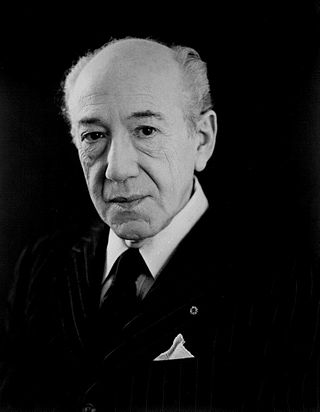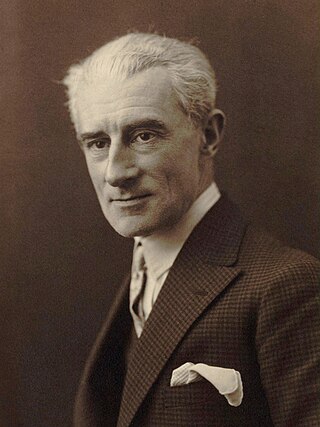History
The violin concerto was begun, at the suggestion of Serge Koussevitzky, in the summer of 1927—although the composer later postdated the beginning of this work to his years at the American Academy in Rome in 1928 and 1929,—and was completed in 1935. [5] [6] It was originally meant to have been premiered by the Boston Symphony Orchestra during their 1932–33 season, with Richard Burgin as soloist, but Sessions did not finish the finale—originally to have been the third movement—in time. Ultimately deciding on a four-movement form, Sessions delivered the violin part to Burgin in the fall of 1934, while still orchestrating the last movement, and Koussevitzky agreed to program the concerto during the first half of the 1935–36 season. When Sessions expressed a preference for a better-known violinist, Burgin graciously stepped aside and Joseph Szigeti was named as the probable soloist.
The Concerto was finally completed in San Francisco in August 1935, and the premiere was scheduled to take place in November 1936, but the now-intended soloist, Albert Spalding, asked for a postponement and requested that Sessions compose a new finale. Sessions declined and released the violinist of his obligation to perform the concerto. [6] Spalding could not master the violin part, especially the "punishingly fast" tarantella finale, and the performance was cancelled at the last minute. The concerto was finally given its first performance with a professional orchestra by Louis Krasner and the Minneapolis Symphony Orchestra, conducted by Dimitri Mitropoulos, on November 14, 1947, [2] [5] [13] though an earlier performance had been given in Chicago on January 8, 1940, by Robert Arthur Gross, the WPA Illinois Symphony Orchestra, and Izler Solomon, [2] [6] and Gross also performed the first two movements in 1941 with the National Youth Orchestra under Leopold Stokowski. [13]
It is dedicated to Sessions' first wife, Barbara. [2] [14]
The concerto's advocates have included Tossy Spivakovsky (who gave the New York premiere with Leonard Bernstein conducting in 1959); more recently, it has been performed in 1968 by David Schneider with Josef Krips conducting, and Ole Bøhn, who has made the work's second recording.
Sessions regarded his concerto as a pronounced move away from his previous neoclassical style. It marks the beginning of his characteristic, unique style featuring extended, continuously flowing sections in which ideas surface, gain clarity and definition, and then recede again into the general flow. It is in four movements:
- Largo e tranquillo, con grande espressione [2] [14] (ca. 9–11 minutes) [lower-alpha 1]
- Scherzo (Allegro) (ca. 6–8 minutes)
- Romanza (Andante) (ca. 4 minutes)
- Molto vivace e sempre con fuoco (ca. 10–11 minutes)
The first movement opens with two motifs, a rising diatonic segment in the trombone consisting of the first five notes of the B minor scale, and a more intense, jagged line in the trumpet, in a rapidly rising and falling pattern covering a diminished eleventh. These two figures occur throughout the entire concerto, and serve to unify the whole. The third movement is joined to the finale by a cadenza for the soloist, which employs a sort of metric modulation in which the violin accelerates through a measure of thirty-seconds to a bridge passage of sextuplet thirty-seconds, entering the finale with a passage equivalent in basic pulse though not in speed with the previous movement.

Milton Byron Babbitt was an American composer, music theorist, mathematician, and teacher. He was a Pulitzer Prize and MacArthur Fellowship recipient, recognized for his serial and electronic music.

The Concerto for Orchestra, Sz. 116, BB 123, is a five-movement orchestral work composed by Béla Bartók in 1943. It is one of his best-known, most popular, and most accessible works.
Although a concerto is usually a piece of music for one or more solo instruments accompanied by a full orchestra, several composers have written works with the apparently contradictory title Concerto for Orchestra. This title is usually chosen to emphasise soloistic and virtuosic treatment of various individual instruments or sections in the orchestra, with emphasis on instruments changing during the piece. It differs from sinfonia concertante in that it has no soloist or group of soloists that remains the same throughout the composition.

Serge Koussevitzky, born Sergey Aleksandrovich Kusevitsky was a Russian-born conductor, composer and double-bassist, known for his long tenure as music director of the Boston Symphony Orchestra from 1924 to 1949.

Walter Hamor Piston, Jr., was an American composer of classical music, music theorist, and professor of music at Harvard University.

David Leo Diamond was an American composer of classical music. He is considered one of the preeminent American composers of his generation. Many of his works are tonal or modestly modal. His early compositions are typically triadic, often with widely spaced harmonies, giving them a distinctly American tone, but some of his works are consciously French in style. His later style became more chromatic.

Roger Huntington Sessions was an American composer, teacher and musicologist. He had initially started his career writing in a neoclassical style, but gradually moved further towards more complex harmonies and postromanticism, and finally the twelve-tone serialism of the Second Viennese School. Sessions' friendship with Arnold Schoenberg influenced this, but he would modify the technique to develop a unique style involving rows to supply melodic thematic material, while composing the subsidiary parts in a free and dissonant manner.
John Harris Harbison is an American composer, known for his symphonies, operas, and large choral works.

Maurice Ravel's Piano Concerto in G major, was composed between 1929 and 1931. The concerto is in three movements, with a total playing time of a little over 20 minutes. Ravel said that in this piece he was not aiming to be profound but to entertain, in the manner of Mozart and Saint-Saëns. Among its other influences are jazz and Basque folk music.
Sergei Prokofiev began his Violin Concerto No. 1 in D major, Op. 19, as a concertino in 1915 but soon abandoned it to work on his opera The Gambler. He returned to the concerto in the summer of 1917. It was premiered on October 18, 1923 at the Paris Opera with Marcel Darrieux playing the violin part and the Paris Opera Orchestra conducted by Serge Koussevitzky. Igor Stravinsky made his debut as conductor at the same concert, conducting the first performance of his own Octet for Wind Instruments.
Joel Krosnick is an American cellist who has performed as a soloist, recitalist, and chamber musician throughout the world for over 40 years. As a member of the Juilliard String Quartet from 1974 to 2016, he performed the great quartet literature throughout North America, Europe, Asia, and Australia.
Alan Feinberg is an American classical pianist. He has premiered over 300 works by such composers as John Adams, Milton Babbitt, John Harbison, Charles Ives, Steve Reich, and Charles Wuorinen, as well as the premiere of Mel Powell's Pulitzer Prize winning Duplicates. He is an experienced performer of both classical and contemporary music and is well known for recitals that pair old and new music.
Paul Zukofsky was an American violinist and conductor known for his work in the field of contemporary classical music.
Edward Toner Cone was an American composer, music theorist, pianist, and philanthropist.
Richard Burgin was a Polish-American violinist, best known as associate conductor and the concertmaster of the Boston Symphony Orchestra (BSO).
The Symphony No. 3 of Roger Sessions was written in 1957. It was a result of a commission by the Koussevitzky Foundation to celebrate the 75th anniversary of the Boston Symphony Orchestra, and was premiered by the Boston Symphony on December 6, 1957, conducted by Charles Munch. Sessions later was commissioned by the Boston Symphony on their centenary, when he provided them with his Concerto for Orchestra. Andrea Olmstead describes all of Sessions's symphonies as "serious" and "funereal", with No. 3 being one of four with, "quiet reflective endings."
Philip Glass's Violin Concerto No. 1 was commissioned by the American Composers Orchestra for soloist Paul Zukofsky and premiered in New York City on 5 April 1987. The work was composed with Glass's late father in mind. The piece quickly became one of Glass's most popular works. It is usually around 25–30 minutes in duration when performed.
The Symphony No. 1 of Roger Sessions is a symphony in three movements, in E minor.
Robert Miller was an American pianist and attorney.






